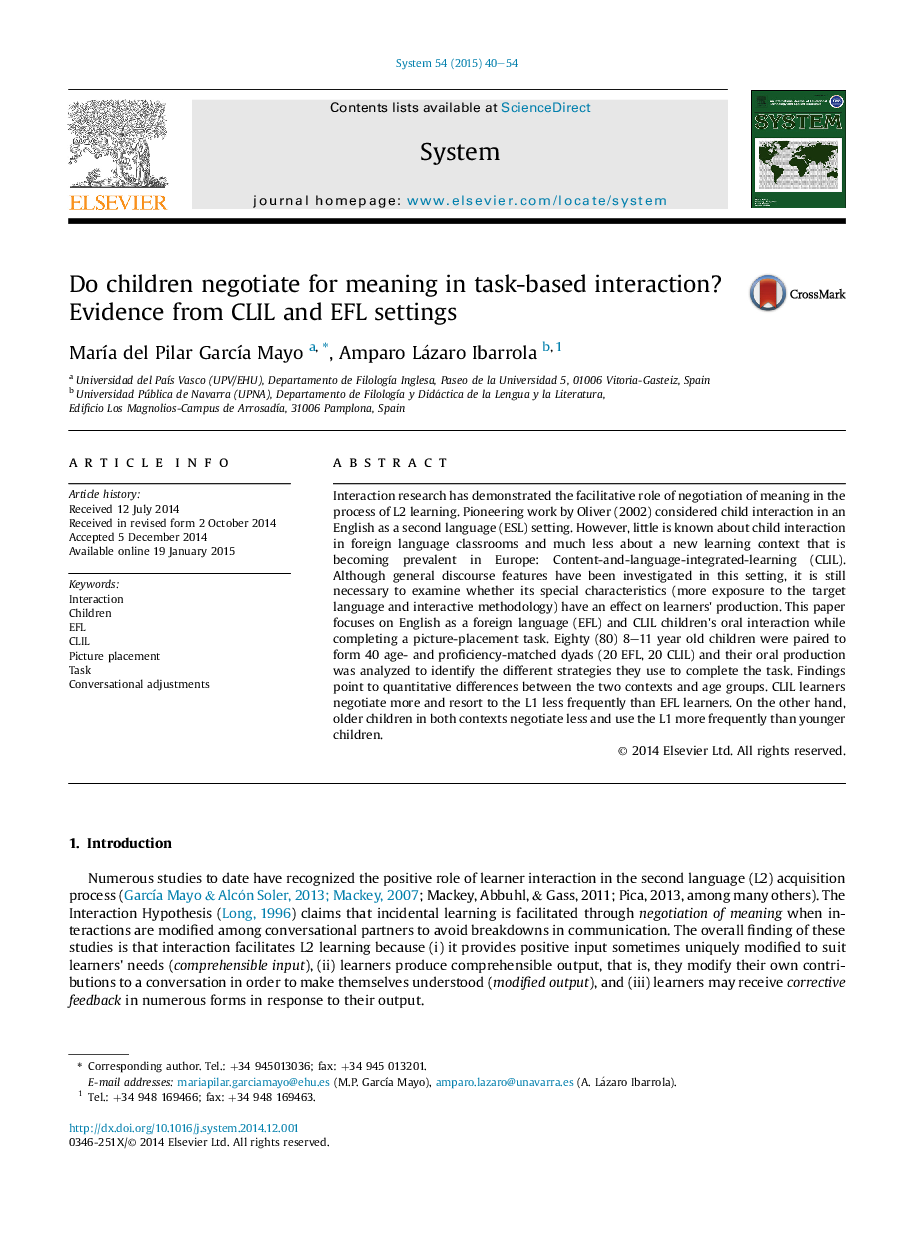| Article ID | Journal | Published Year | Pages | File Type |
|---|---|---|---|---|
| 372926 | System | 2015 | 15 Pages |
Interaction research has demonstrated the facilitative role of negotiation of meaning in the process of L2 learning. Pioneering work by Oliver (2002) considered child interaction in an English as a second language (ESL) setting. However, little is known about child interaction in foreign language classrooms and much less about a new learning context that is becoming prevalent in Europe: Content-and-language-integrated-learning (CLIL). Although general discourse features have been investigated in this setting, it is still necessary to examine whether its special characteristics (more exposure to the target language and interactive methodology) have an effect on learners' production. This paper focuses on English as a foreign language (EFL) and CLIL children's oral interaction while completing a picture-placement task. Eighty (80) 8–11 year old children were paired to form 40 age- and proficiency-matched dyads (20 EFL, 20 CLIL) and their oral production was analyzed to identify the different strategies they use to complete the task. Findings point to quantitative differences between the two contexts and age groups. CLIL learners negotiate more and resort to the L1 less frequently than EFL learners. On the other hand, older children in both contexts negotiate less and use the L1 more frequently than younger children.
